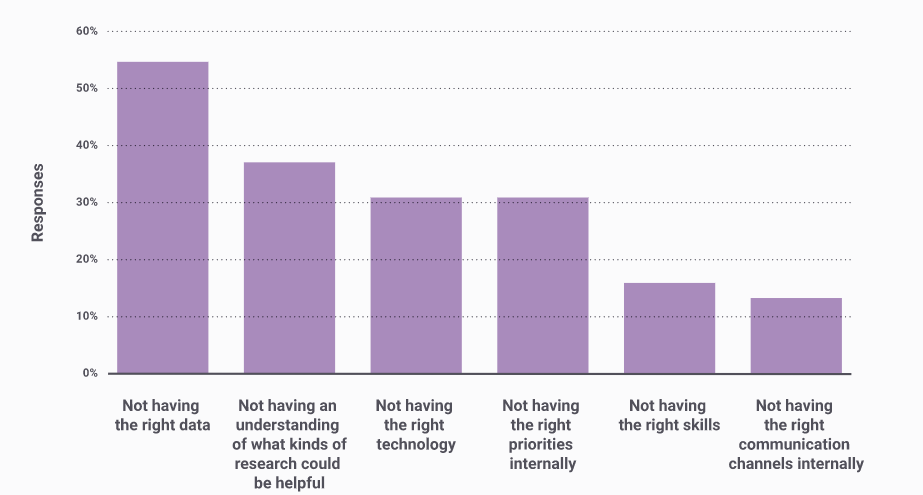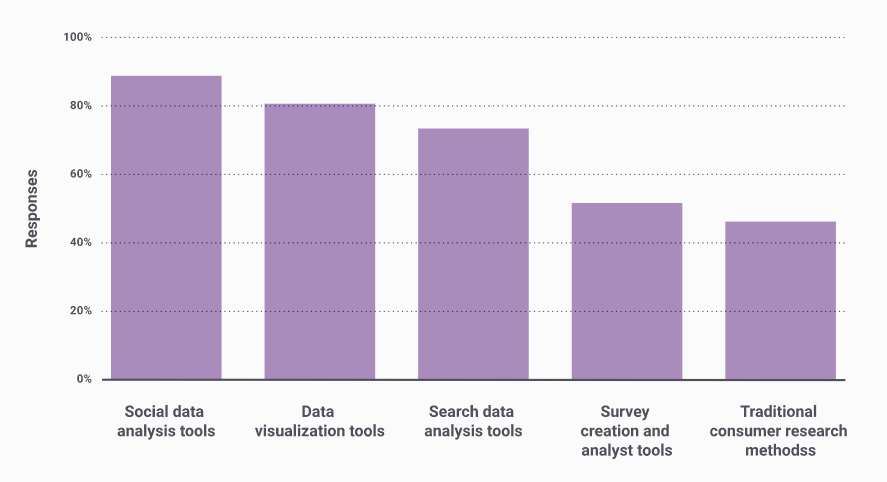The relationship between brands and customers has changed radically over the past few decades. Not long ago, consumers cared more about price and quality than any other factor. Today, while high quality is still a factor in purchasing decisions, price is no longer at the top of the list. Other factors such as convenience, positive experience and a reputation for being socially responsible weigh heavily into where a consumer ultimately purchases.
In order to understand how a consumer shops and makes purchase decisions, brands must start by getting to know their customers. Technology and data sets have radically advanced, allowing brands the ability to hone in on customer insights like never before. However, many brands are still challenged in trying to achieve this intelligence.
Getting to Know Your Customers
In research by Brandwatch, respondents were asked what was getting in the way of getting to know their customer better, and what tools they thought would be most important for generating these insights.
According to the research, more than 50% cited a lack of access to the right data as a challenge and over a third of respondents stated that there was a lack of understanding on helpful research in this area.

To better understand and develop consumer insights, brands stated that social, search, and survey analysis tools were important tools.

Data-Driven Marketing
Understanding your customers requires a data-driven mindset.
A study by Forbes showed that 64% of executives “strongly agree” that data-driven marketing provides a competitive edge in deciding on how to compete with other companies in the same field.
According to Media Math, 53% of digital marketers said “a demand to deliver more relevant communications/be more ‘customer-centric’” is one of the top driving factors for companies who are investing in data-driven marketing.
eMarketer reports that 90.7% of US advertisers and marketers segment data to better target and engage with their customers. In fact, over half said that they were more advanced in that area than even five years ago. eMarketer also reports that 92.3% of organizations maintain databases to host information on customers or prospects, at least to some extent.
Data-driven marketing tops the lists of priorities for 55% of marketers today. This is according to research by eConsultancy. According to survey respondents, 42% also stated improving customer intelligence for a holistic customer view and integration of marketing tools for greater efficiencies as important areas of focus for this year.

Brands must be diligent and put practices in place to collect data from each customer touchpoint across channels. When this data is integrated and enhanced with third-party data sets, brands can generate deep insights into who their customers are and what actions their customers plan to take next.
Customer Data Platforms for Customer Insights
Many marketers are implementing customer data platforms (CDP) to unify fragmented data. A CDP at its core is marketing software that works to centralize data from multiple sources, creating a unified customer database. Rather than heavy investments and relying on IT, CDPs are owned by marketers and highly intuitive to use.
The Porch Group Media’s CDP is designed to integrate data from multiple sources to create a single customer view. By then applying machine learning and analytics, brands can further refine the customer view in order to deploy personalized campaigns and journeys.
Marketing technology such as a CDP ensures that the most up-to-date customer profile is always available for real-time and personalized messaging across the customer journey. Without this level of intelligence, the customer experience can suffer, leading to lost sales and revenue. Customers today are willing to pay more for great customer experiences and the first step is with a data-driven, 360-degree customer profile.
Customer Experience Statistics
Take a look at some of these statistics on the importance of a great experience:
- A good customer experience means your customers
spend more (Temkin Group)
- 86% of buyers are willing to pay more for a great customer experience
- 73% of buyers point to customer experience as an important factor in purchasing decisions
- 65% of buyers find a positive experience with a brand to be more influential than great advertising
- Companies that are experience-led have 1.6x higher brand awareness, 1.5x higher employee satisfaction, and 1.9x higher average order value. Experience-led businesses also have 1.7x higher customer retention, 1.9x return on spend, and 1.6x higher customer satisfaction rates. (Forrester)
- To deliver on their customer experience management goals, 55% of marketers are prioritizing more effective audience segmentation and targeting. (Adobe Digital Trends Report)
- Consumers with an emotional connection to a brand have a 306% higher lifetime value, stay with a brand for an average of 5.1 years vs. 3.4 years, and will recommend brands at a much higher rate (71% vs. 45%). (Motista)
- 84% of companies that work to improve their customer experience report an increase in their revenue. (Forbes)
- 73% of companies with above-average customer experience perform better financially than their competitors. (Forbes)
- 96% of customers say customer service is important in their choice of loyalty to a brand. (Forbes)
So how well do you know your customers? This is a question that brands must continuously ask themselves. The better you know them, the better the rewards.
Learn how Porch Group Media can help you get to know your customers better and reach them across channels to boost your marketing success. Contact us to get started!





